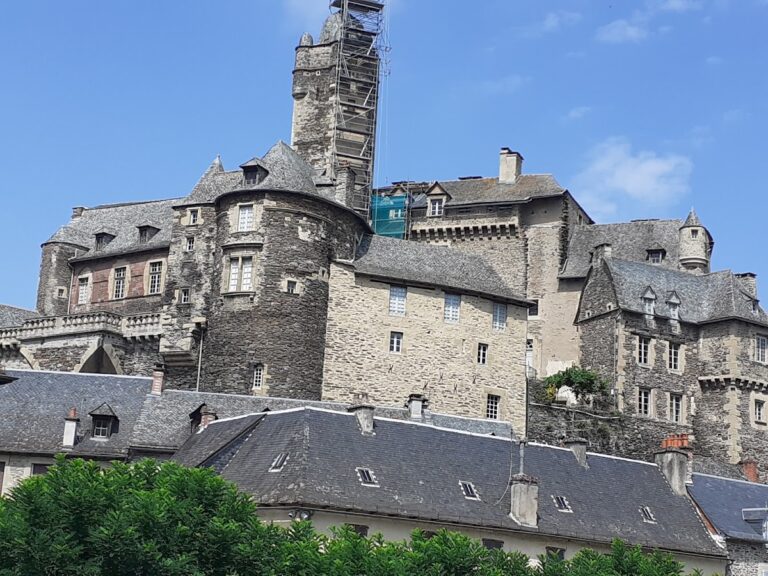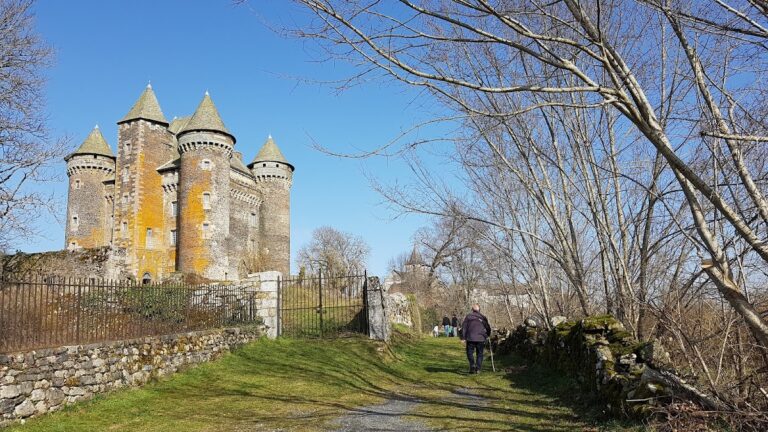Château de Calmont d’Olt: A Medieval Fortress in Espalion, France
Visitor Information
Google Rating: 4.5
Popularity: Medium
Google Maps: View on Google Maps
Official Website: www.chateaucalmont.org
Country: France
Civilization: Unclassified
Remains: Military
History
The Château de Calmont d’Olt is located in Espalion, France, and was originally established by the Carolingian civilization during the early medieval period. Its earliest known mention dates back to 883 under the name “aice Calvomontensis,” identifying it as the defensive center for a Carolingian administrative district called a viguerie.
Throughout the Middle Ages, Calmont d’Olt served as the seat of a notable feudal lineage that traced its origins to the Carolingian administration. One of its distinguished members was Raimond de Calmont d’Olt, who held the ecclesiastical office of bishop of Rodez and died in 1297. The castle’s importance derived primarily from its strategic position, overseeing the road from Rodez to the Aubrac plateau and controlling a key crossing of the Lot river along the important Toulouse-Rodez-Lyon trade route.
From the 11th through the 15th century, the castle underwent continual architectural adaptations to meet evolving military needs. During the long conflict known as the Hundred Years’ War, it was reinforced with a lower defensive wall featuring eight bastions designed to mount artillery, reflecting advances in siege warfare of the time. This conflict brought several military actions that shifted control of the fortress between French and English forces, with documented accounts of sieges and occupations.
In 1595, amid ongoing regional unrest, the castle was violently attacked and sacked by local inhabitants. Military activity around the fortress continued intermittently into the 17th century, but by then, its owners increasingly abandoned it in favor of more comfortable residences located down in the Lot valley. This gradual neglect led to the castle falling into ruin.
During the 18th century, the dilapidated fortress saw brief occupation by counterfeiters who used its remote setting for illicit activities. In the 20th century, recognition of the castle’s cultural and historical value led to its registration as a historic monument in 1943. Later, in 1987, the property was acquired by Thierry Plume, who initiated restoration efforts and archaeological investigations. Excavations conducted in 2006 uncovered previously unknown Romanesque architectural elements, confirming that parts of the castle dated back to the 11th or 12th century.
Remains
The Château de Calmont d’Olt is perched atop a basalt dyke, rising 535 meters above sea level, and overlooks the town of Espalion and the surrounding Lot valley by nearly 200 meters. The elevated location provides commanding views of the Aubrac mountains beyond. The castle’s layout includes two main defensive enclosures: an upper ward featuring a central keep and a lower courtyard fortified during the 15th century to withstand artillery assault.
At the heart of the upper section stands a donjon, or keep, constructed around the year 1000, built primarily from dark basalt stone extracted from the volcanic rock of the ridge. Adjacent to the donjon are two towers and the main residential building, known as the corps de logis. The structures retain evidence of early medieval masonry techniques, highlighted by remnants of Romanesque design identified during recent archaeological work.
Surrounding the lower part of the castle is a curtain wall dating from the 15th century, strengthened by eight bastions. These bastions are notable for their open rear sides, a design feature called “open-gorge” that allowed defenders to move safely behind the artillery platforms. This lower enceinte was added to address the threats posed by gunpowder weaponry during the later medieval period.
Among the surviving remains outside the defensive walls is a fragment of the external chapel’s wall, hinting at the presence of a place of worship within the castle grounds. Archaeological excavations uncovered distinctive Romanesque elements such as a carved keystone and a triple arcade window whose stones had fallen into rubble near one of the towers. These finds confirm the presence of significant architectural features from the 11th or 12th centuries, illustrating the castle’s long history of construction and adaptation.
Today, the ruins of the Château de Calmont d’Olt stand partially preserved and stabilized. Continuous restoration efforts since the late 20th century have sought to secure the remains of the chapel, the donjon, towers, and both defensive enclosures. Protected as a historic monument, the site displays a coherent sequence of medieval military architecture while also revealing traces of the castle’s original Romanesque construction phase.










